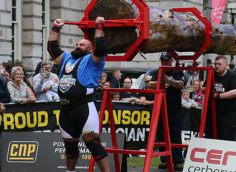There aren't that many truly "bad" exercises, but there are a lot of misused exercises. One of the most common misapplications is when personal trainers use training methods designed for advanced athletes on their regular – and often overweight – clients. Here's one of them.

Jumps can have a positive impact on body composition, but not enough to justify using them with out of shape people. The risk isn't worth the reward.
I blame The Biggest Loser for this though. They had obese people doing high-rep jumping drills on national TV, so surely it must be a sensible practice, right?
Just put yourself in the body of an obese client:
- You're self-conscious. Just getting to the gym and staying there is a challenge. You feel like you're on display and don't want to attract any attention.
- The extra weight makes it harder to move and it's risky for your joints which have to absorb more force. If you have knee and lower back pain from just walking you can imagine what jumping around does.
- You likely don't have a background in sports and as a result your coordination is poor. And now you're being asked to do a variety of jumps? No way!
Jumping on a box, over hurdles, side to side bounding, and anything of the sort does nothing but create a spectacle for the coach. There are no real benefits for you, unless you're already fit and somewhat coordinated.
If you're overweight and self conscious, think of what happens when you jump up and down. The fat also bounces up and down too. And that's the kind of situation that'll decrease someone's motivation to keep going back to the gym.
And physically speaking, imagine how destructive jumping around will be on the joints of someone who has very little muscle and a lot of weight to move.
If jumping drills were vastly superior to other exercises that stimulate fat loss, then sure, there'd be a good reason to include them. But they're not. The caloric expenditure from jumps isn't higher than other forms of more appropriate exercises.





